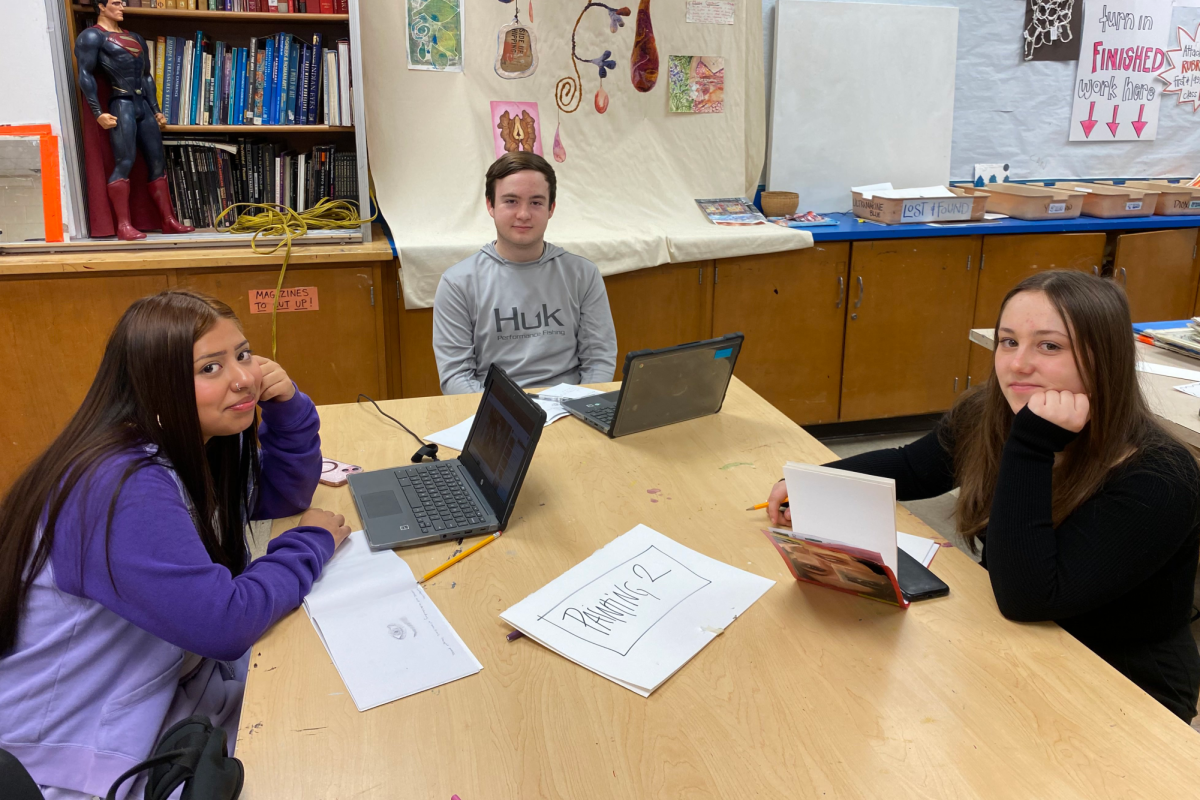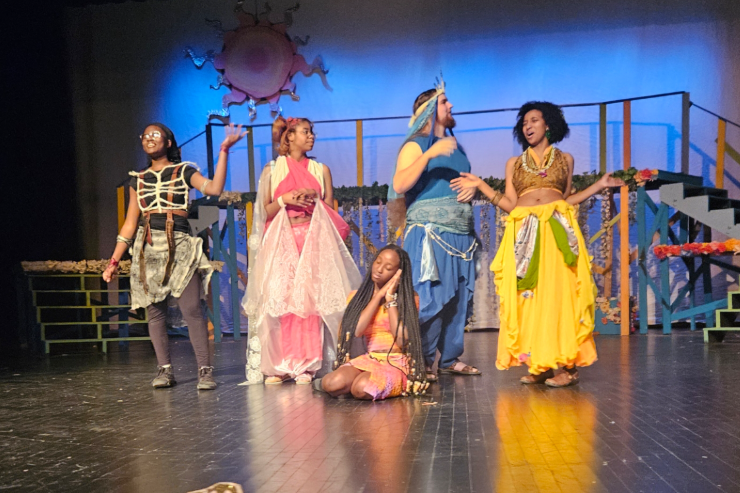“People are just way more interested in stories,” explained Avery Shoemaker, a junior and CIS French 5 student, about her enthusiasm in learning a language. “When we do units based on art I enjoy them way more. There’s more continuity throughout the whole unit and it tells a story. That engages people more.”
Shoemaker noticed this change in level of engagement when doing a lesson in French focused on the French version of the musical Les Misérables. Her class dove deep into this piece of work by reading scenes, listening to the French soundtrack, and watching the 1998 film adaptation.
Besides an increase of interest, this arts-based French unit also increased students’ awareness about other cultural aspects surrounding the language. “We learned a lot about the history, the social structure, and the social values at that time in France,” Shoemaker stated. “It was less about grammar and more about practical use, that made me more interested!”
Spanish teacher Sheila Willette also found that utilizing the arts in her language class was a good way to introduce new ideas. Spanish classes 2 and 4 attended a bilingual play based on a novel. After seeing the show, Willette noticed a change in enthusiasm among her students.
“There was a lot more interest in this unit. If you introduce any concept with art, there are more entry points for students,” Willette explained.
Although students and teachers seem to really enjoy and engage in arts based projects, some seem skeptical about this approach to learning. Nathan Kuncel, the director of the organizational psych program at the University of Minnesota, questions the effectiveness of this method.
“Art does have a big impact on education. It presents ideas in a different way which is important, but theres also the the argument of it helping kids with different learning styles. There’s a large debate in the educational psychology community about the validity of different learning styles.”
Many people in educational psychology have recognized that students tend to have a preference for different ways of learning material. These different ways include visual, oral, verbal, logical, and physical learning. Willette explained that when a concept is not clear in its written form, the visual form, art, can assist the learner and facilitate understanding, “Art engages multiple senses and that helps students understand and really get the concepts better.”
While students seem to enjoy arts in the classroom, the effectiveness of this method is something that should be considered. A recent article by the Association for Psychological Science stated that although people may have different preferences for learning styles “We found virtually no evidence for the validity of learning styles applied to education.” This brings about the question of how substantial art is as a resource for language classrooms.
Although the efficiency of using art in the classroom is under much scrutiny, the fact of the matter is that it is different. French teacher Melissa Davis took her French 3 class to the Minnesota Institute of Art after doing a unit on French impressionist art in her class. “It was a nice change from really digging into grammar. It interested them [the students] in a different way which helped their engagement.”
Davis attributed this engagement to the different use of the language in this unit. “The students did a research project, learned about the artists, gained an appreciation for the art, and learned how to really talk about art. It was all in French too which really increased their proficiency.”
Marisa Skelley, a junior and student in Davis’s French 3 class, said, “I’d have to say that [impressionist art] was probably my favorite thing we did all year.”
Junior Maggie Johnson, another student in Davis’s class, agreed that the arts based unit was particularly interesting for her. “It was easier for me to learn and remember,” said Johnson. “It’s much more interesting than sitting and learning vocabulary, it was a good change.”
Kuncel stated his opinion that art in the language classroom can be beneficial and refreshing, but has some downfalls. “The reality is that there are only so many minutes in a class. Any moment spent discussing or giving instructions or doing an art project will take up time,” Kuncel added. “Time limitations need to be taken more seriously. In education there will always be trade offs.”







